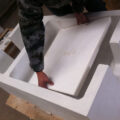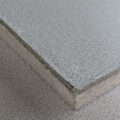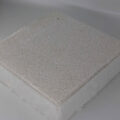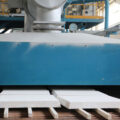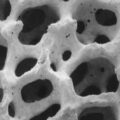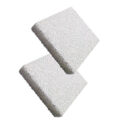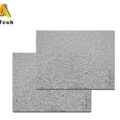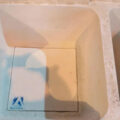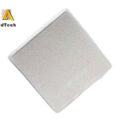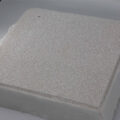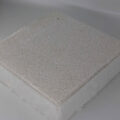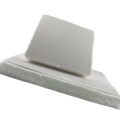In casting production, casting defects caused by non-metallic inclusions account for 50% to 60% of the total number of waste products. Inclusion defects not only severely reduce the mechanical properties of castings, but also have a harmful effect on processing performance and appearance. Purifying liquid casting alloys and reducing or eliminating various non-metallic inclusions is very important for obtaining high-quality castings. Molten Metal Filtration technology can effectively achieve the purpose of purifying liquid casting alloys.

Molten Metal Filtration
Since the aluminum alloy foam ceramic filter was first used in 1978, the Molten Metal Filtration technology has developed rapidly. The ceramic filter uses polyurethane foam as a carrier, which is immersed in a suspending agent made of ceramic powder, binder, sintering agent, and paint to squeeze out the excess paint. The paint is evenly coated on the carrier skeleton to form a green body, and then the green body is dried and baked at a high temperature.
Open Cell Foam Filter Materials are divided into the bonded type and sintered type. The former relies on a binder to bond ceramic particles together. The latter relies on heat preservation at high temperatures to sinter and fuse relatively pure ceramic micron particles. The ceramic foam filter has a unique three-dimensional connected curved pore network skeleton structure, which has an open porosity of up to 80%-90%, and has the following three filtration and purification mechanisms: one is mechanical interception, and the second is rectification Scum, the third type is deep adsorption. Through these three filtering and purification mechanisms, it can effectively filter out large inclusions and a large part of small floating objects of liquid metal to tens of microns, thereby reducing the casting waste rate and welding repair rate. In addition, it can simplify the gating system and improve the metallographic structure, thereby increasing the output and productivity of the casting process, and improving the quality and performance of castings. Therefore, the foam ceramic filter has a good application prospect.
Molten Metal Filter should have the following features:
- It has sufficient mechanical strength at room temperature and high temperature, so that it can withstand the impact of transportation vibration, extrusion and high-temperature molten metal during use.
- It has suitable refractoriness and low thermal expansion coefficient, so that it will not soften and deform under the long-term action of high-temperature molten metal.
- It has excellent high-temperature chemical stability, so that it is not corroded by high temperature molten metal to avoid metal pollution.

